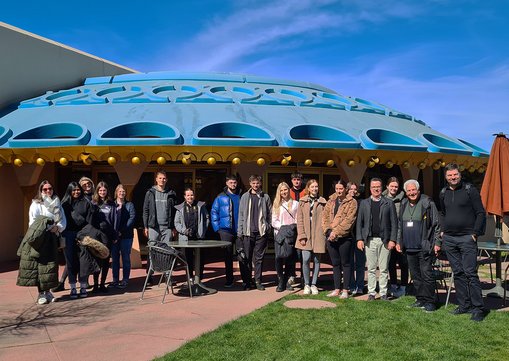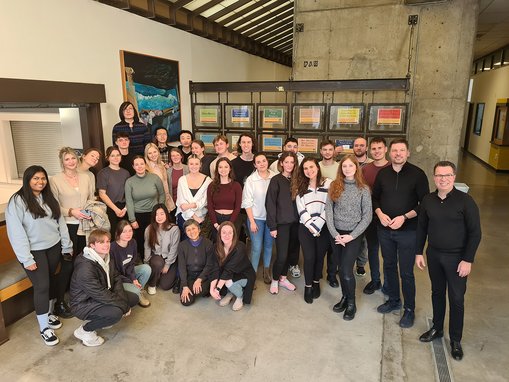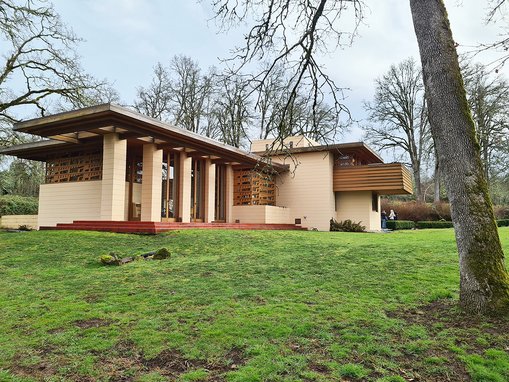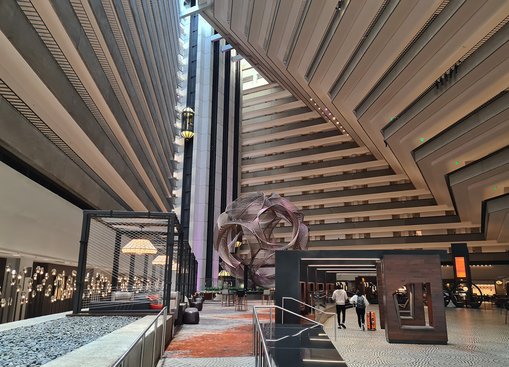LATEST NEWS
A 1000-mile architecture road trip
The elective Workshop International on West Coast Architecture took students to the U.S. West Coast during the semester break from February 24 to March 3. For 15 students of the bachelor's and master's degree programs Architecture and Real Estate Management and the two organizing professors Joachim B. Kieferle and Horst Roman-Müller, it was an intense 1,000-mile architecture road trip from Eugene in Oregon, along the coast to Berkeley in California.
The excursion began with a two-day workshop together with 16 students from the University of Oregon, School of Architecture & Environment, in the studio of Prof. Nancy Yen-Wen Cheng. Working in international teams of two, students collaborated to develop flexible interiors for the American students' current design projects and presented them in sketches, models, and photographs.
“In his introductory tour of the University of Oregon campus, horticulture lecturer Dr. Whitey Lueck showed that the teaching activities and places of learning at the American university differ significantly from German universities. The campus was largely unvegetated when the University of Oregon was founded in 1885,” said Prof. Roman-Müller.
Typical West Coast architecture
The architecture of the U.S. West Coast is mainly influenced by the mid-century modern architecture of the 20th century (about 1930 to 1970). The architectural road trip focused on projects from this era. Such as the Gordon House in Silverton by Frank Lloyd Wright right at the beginning, in what he called the USONIAN style, an architectural style specific to the U.S. "The impressive thing about the Gordon House is the spatial composition and the confident use of the various materials. Alvar Aalto designed the Mount Angel Abbey library quite differently, but with equal aplomb, with a multifaceted library space with many intermediate levels and framed views of the vast landscape,” says Prof. Kieferle.
Architect Landry Smith’s multi-award winning wood building for athlete Roscoe Divine has demonstrated the quality in current American wood construction. After visiting the Oregon Dunes and the redwoods Avenue of the Giants, we went to the coastal town Fort Bragg. City Council Woman Tess Albin-Smith and Planner Sarah McCormick introduced the issues and current development strategies for Fort Bragg after the sawmill closed about 20 years ago.
A highlight of the road trip was a tour of the 1960s Sea Ranch community, which features buildings by Charles Moore, Don Jacobsen and other architects that are perfectly integrated into the coastal landscape. German-born Michaela Suess from the real estate office Liisberg showed us various original residential buildings, walk-in cabins and the Sea Lodge. “Moonraker Recreation Center was particularly surprising with the impressive Supergraphics by Barbara Stauffacher,” said Professor Roman-Müller.
In California’s wine region Napa Valley, we visited two wineries from the early 1990s with very different approaches – Clos Pegase (architect: Michael Graves) in the postmodern style and Artesa (architect: Domingo Triay) as a terratecture. Other highlights included visits to the Marin County Civic Center in San Rafael, also designed by Frank Lloyd Wright, and finally, in San Francisco, the Cathedral of St. Mary of the Assumption by Pietro Belluschi and Pier Luigi Nervi, and the Hyatt Regency Embarcadero Center with the largest hotel lobby in the world and the forerunner of atrium hotels by architect and project developer John Portman. And the campus tour of Berkeley University by Professor Hajo Neis emphatically demonstrated why the university enjoys such a reputation.
“With many new impressions, the students continued working on various tasks given on the architecture road trip dealing with climate, materials and building construction as well as sustainable buildings (green buildings) until the end of March,” explains Professor Kieferle, who, like Professor Roman-Müller, thanked the students for their confidence in the road trip organization, their great resilience, as well as their commitment and enthusiasm for architecture, the country and the people of the West Coast of the USA. "Another special thanks goes to the International Office and the President’s Council of the RheinMain University of Applied Sciences, who made this workshop possible with internationalization funds, as well as the Faculty of Architecture and Civil Engineering, who also supported all participants financially," both professors agreed.



